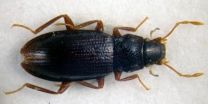(Press-News.org) A large number of illnesses stem from misfolded proteins, molecules composed of amino acids. Researchers at the University of Zurich have now studied protein misfolding using a special spectroscopic technique. Misfolding, as they report in Nature, is more frequent if the sequence of the amino acids in the neighboring protein domains is very similar.
Proteins are the main molecular machines in our bodies. They perform a wide range of functions, from digesting and processing nutrients, converting energy and aiding cell structure to transmitting signals in cells and the whole body. In order to perform these highly specific functions, proteins have to adopt a well-defined, three-dimensional structure. Remarkably, in most cases they find this structure unaided once they have been formed out of their individual building blocks, amino acids, as a long chain molecule in the cell.
However, the process of protein folding can also go wrong, which means the proteins affected are no longer able to perform their function. In some cases, this can even have much more serious consequences if these misfolded proteins clump and trigger neurodegenerative diseases such as Alzheimer's or Parkinson's disease.
In the course of evolution, a crucial factor in the development of proteins has thus been to avoid such "misfolding processes". However, this is no easy task since the same molecular interactions that stabilize the correct structure of the individual proteins can also bring about interactions between protein molecules, causing them to misfold.
Using a special spectroscopic method called single-molecule fluorescence, researchers from the Universities of Zurich and Cambridge have now studied the circumstances under which misfolding occurs. The team headed by Prof. Benjamin Schuler from the University of Zurich studied sections, or "domains", of the largest protein in our bodies, titin, which helps the stability and elasticity of the muscle fibers. It is assumed that individual titin domains can unfold while the muscle is heavily exerted to avoid damaging the muscle tissue. When the muscle relaxes again, however, there is a danger that these unfolded domains might fold incorrectly. There is also a similar risk for other multidomain proteins.
For their study, the researchers attached small dye molecules as probes in the protein. "Using our laser-spectroscopic method we were able to determine distances on a molecular scale, i.e. down to a few millionths of a millimeter, through the energy transfer between the probes," explains Prof. Schuler. This enabled the structures of correctly and misfolded proteins to be distinguished and thus the proportion of misfolding determined.
"The study of different titin domains in our experiments revealed that the probability of misfolding increases if neighboring domains are very similar in the sequence of their amino acids," says Prof. Schuler. This is apparently the reason why neighboring domains in proteins have a limited degree of similarity. "This seems to be a key evolutionary strategy to avoid protein misfolding and thus guarantee their maximum functionality," says Schuler.
INFORMATION:
Similarities cause protein misfolding
2011-06-01
ELSE PRESS RELEASES FROM THIS DATE:
UK advice on sun creams 'not in the interests of public health,' warns DTB
2011-06-01
The strength of sun cream recently recommended by the National Institute for Health and Clinical Excellence (NICE) to stave off sunburn is far too low and "not in the interests of public health," warns the Drug and Therapeutics Bulletin (DTB).
NICE should rethink its advice, and soon, it says.
NICE recommends sunscreens with a sun protection factor, or SPF, of 15 as sufficient to prevent sunburn and the subsequent potential risk of skin cancer.
But DTB says that this is based on standard test conditions in which manufacturers apply 2 mg/cm2 of product to the skin.
"In ...
Cosmetics can cause serious adverse effects
2011-06-01
Permanent hair dye gives the most serious adverse effects, yet there are also many reactions to facial and body moisturisers. This comes from the first report from the National Register of Adverse Effects from Cosmetic Products published by the Norwegian Institute of Public Health.
"The Register gives us a better overview of the products that cause adverse effects, the type of adverse effect and who experiences them. Then we can make an assessment and even warn against the use of certain products," says researcher Berit Granum at the Division of Environmental Medicine ...
Online advertising waters down impact of offline ad bans
2011-06-01
Toronto – Not allowed to advertise your booze or smokes on a billboard?
That's okay. Research shows online advertising works especially well in places with government ad bans.
"If you want to regulate the offline world, you have to remember that people have access online too and you have to think about how that online world is going to mitigate the effects of your regulation," says Avi Goldfarb, a marketing professor at the University of Toronto's Rotman School of Management who co-wrote a study on the topic with Catherine Tucker of MIT's Sloan School of Management.
The ...
Searching the web for dengue
2011-06-01
Boston, Mass. – Researchers at Children's Hospital Boston and Google.org have found web-based search data to be a viable source of information for early detection and monitoring of outbreaks of dengue, an emerging mosquito-borne virus found in tropical areas of the world. Because search data allows the capture of disease-related queries in near real time, it could help public health officials in the more than 100 countries affected by dengue respond more quickly to nascent epidemics.
A team from the Children's Hospital Informatics Program (CHIP), led by John Brownstein, ...
New endemic beetles discovered in Iberian Peninsula
2011-06-01
A European research team, with Spanish participation, has described two new beetle species measuring two millimetres in length. The coleoptera (beetles) were found in streams in the Pyrenees and Pre-Pyrenees mountains (from Gipuzkoa to Girona) and in the Sierra de la Demanda mountains (Burgos). Experts had previously thought that they belonged to another European species.
"These species, which have a restricted range, had been confused with another European species with a more extensive distribution (Hydraena saga) and so their independent evolutionary history was unknown", ...
MadCap Software Increases Q1 2011 Revenues by 41% Year-Over-Year
2011-06-01
MadCap Software, Inc. (http://www.madcapsoftware.com), the leader in multi-channel content authoring and a showcase company for Microsoft Visual Studio and Microsoft XPS, today announced that revenues for Q1 2011 have grown 41% over Q1 2010, continuing the profitability that the company has enjoyed since launching its flagship product Flare in 2006. In the wake of strong growth, MadCap has increased its cash and accounts receivable by 30% over the same period ending 2010. At the same time, MadCap continues to invest in resources by expanding headcount by 21% over the previous ...
Study: Biodegradable products may be bad for the environment
2011-06-01
Research from North Carolina State University shows that so-called biodegradable products are likely doing more harm than good in landfills, because they are releasing a powerful greenhouse gas as they break down.
"Biodegradable materials, such as disposable cups and utensils, are broken down in landfills by microorganisms that then produce methane," says Dr. Morton Barlaz, co-author of a paper describing the research and professor and head of NC State's Department of Civil, Construction, and Environmental Engineering. "Methane can be a valuable energy source when captured, ...
California scientists discover how vitamins and minerals may prevent age-related diseases
2011-06-01
Bethesda, MD—Severe deficiency of the vitamins and minerals required for life is relatively uncommon in developed nations, but modest deficiency is very common and often not taken seriously. A new research published online in the FASEB Journal (http://www.fasebj.org), however, may change this thinking as it examines moderate selenium and vitamin K deficiency to show how damage accumulates over time as a result of vitamin and mineral loss, leading to age-related diseases.
"Understanding how best to define and measure optimum nutrition will make the application of new technologies ...
Higher return to prison for women without drug abuse programs
2011-06-01
TORONTO, Ont., May 31—Female prisoners who did not participate in a drug treatment program after their release were 10 times more likely to return to prison within one year than other prisoners, a new study has found.
More than one-third of those women were sent back to prison within six months, according to the national study led by Flora Matheson, a medical sociologist at St. Michael's Hospital.
The findings, published in the June issue of the American Journal of Public Health, underline the importance of post-release treatment programs for prisoners with substance ...
The real space saver: NC State students look to support manned mission to Mars
2011-06-01
What would it take to make a manned mission to Mars a reality? A team of aeronautical and textile engineering students from North Carolina State University believe part of the solution may lie in advanced textile materials. The students joined forces to tackle life-support challenges that the aerospace industry has been grappling with for decades.
"One of the big issues, in terms of a manned mission to Mars, is creating living quarters that would protect astronauts from the elements – from radiation to meteorites," says textile engineering student Brent Carter. "Currently, ...


